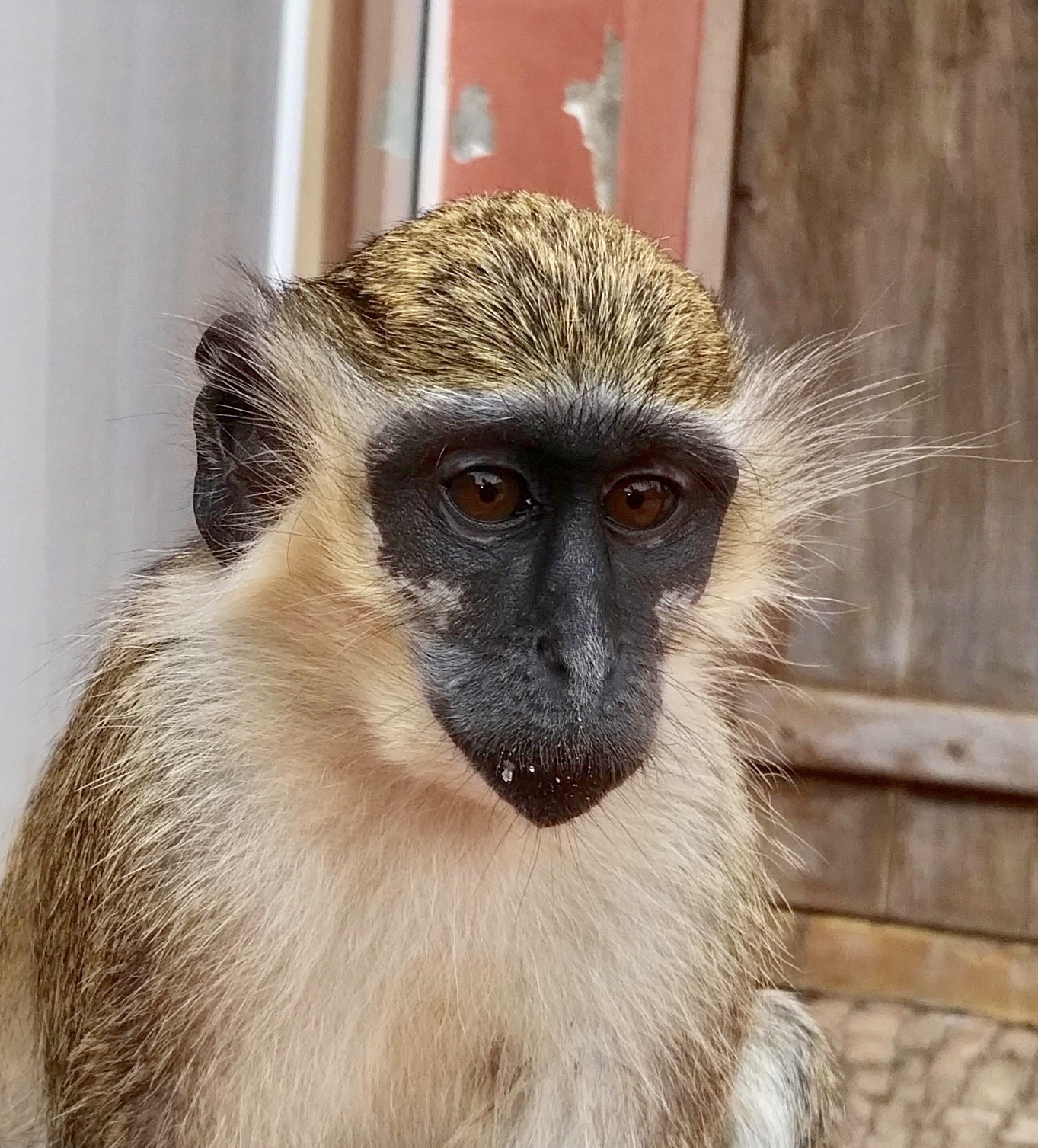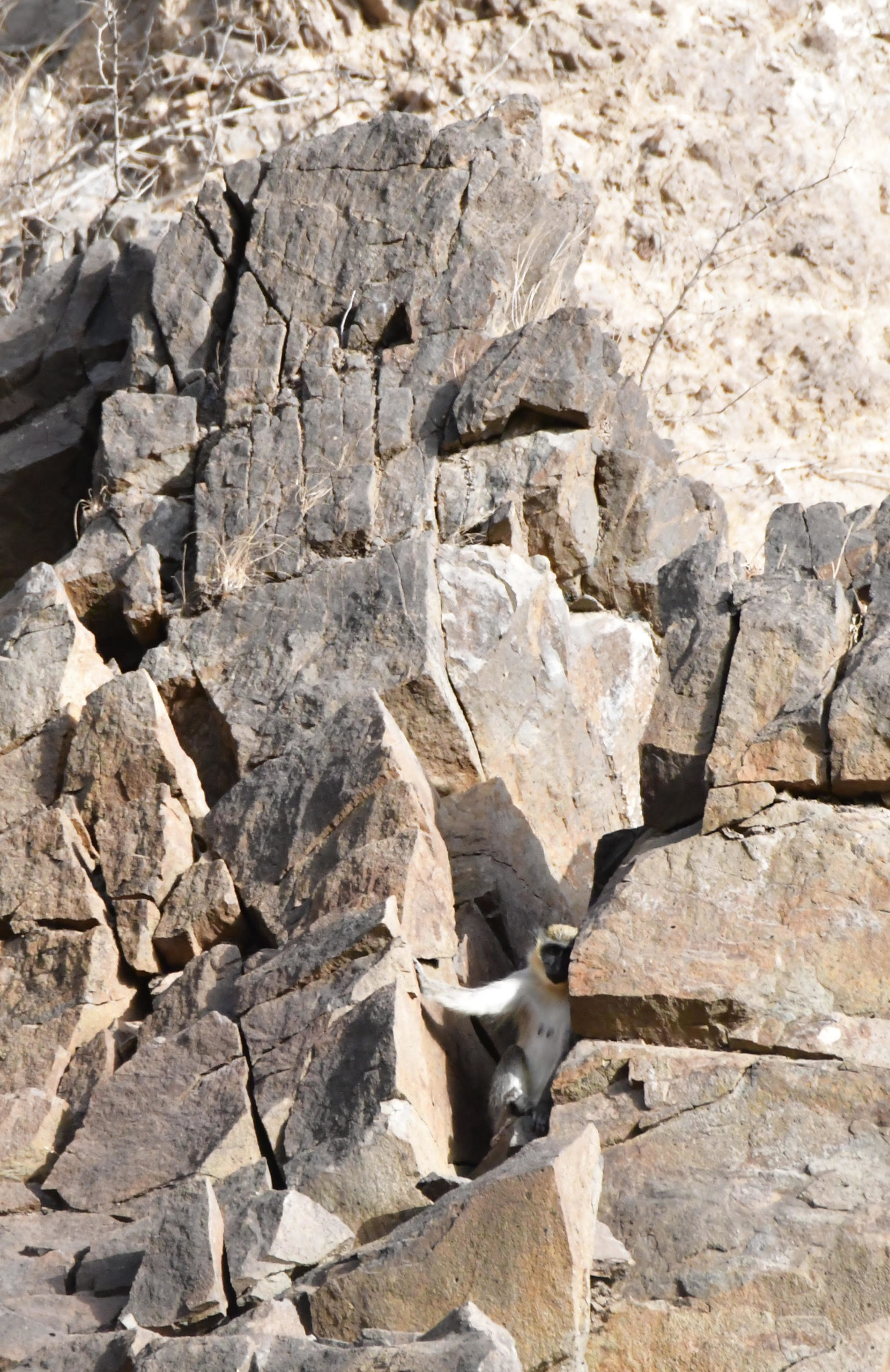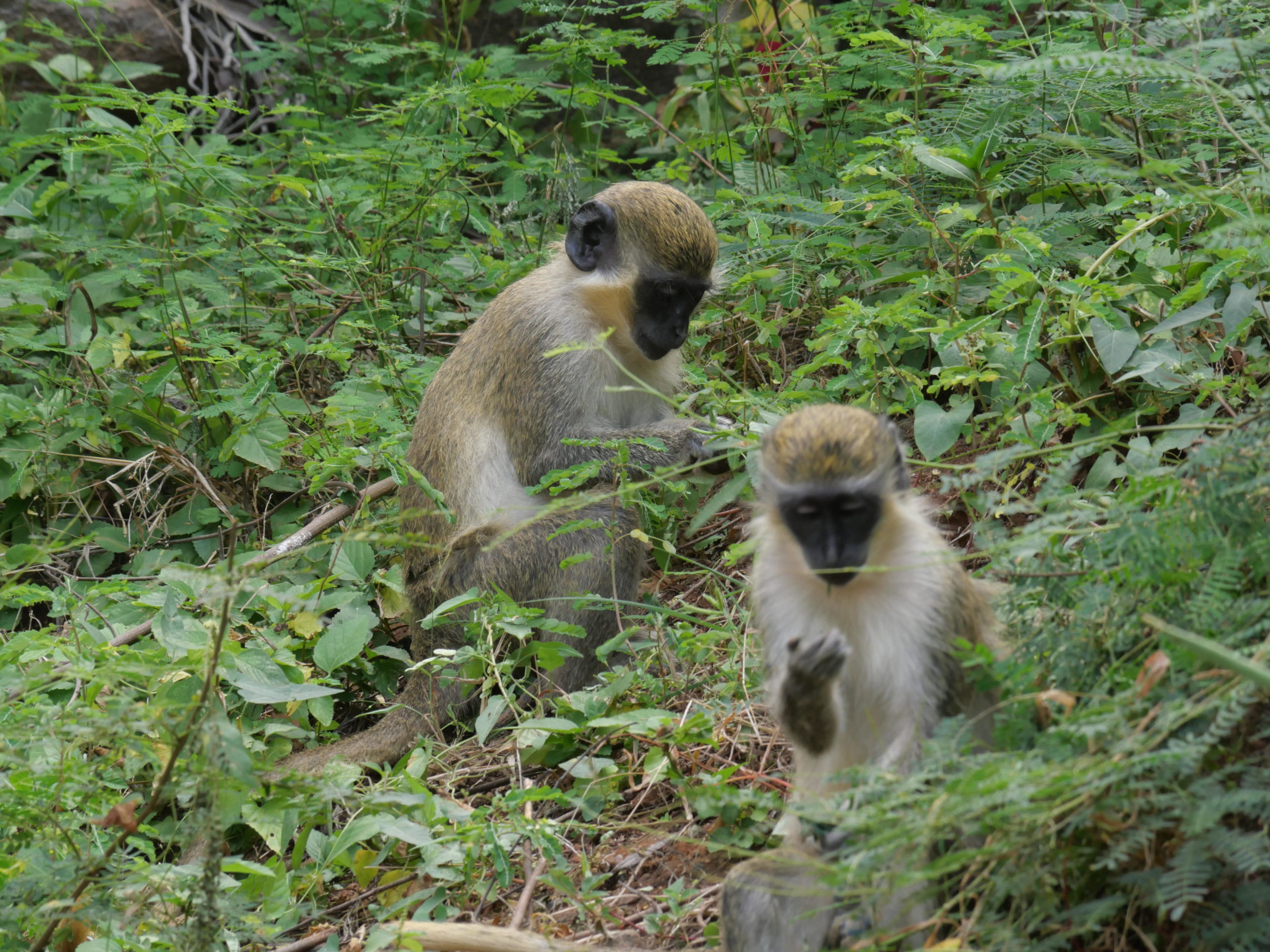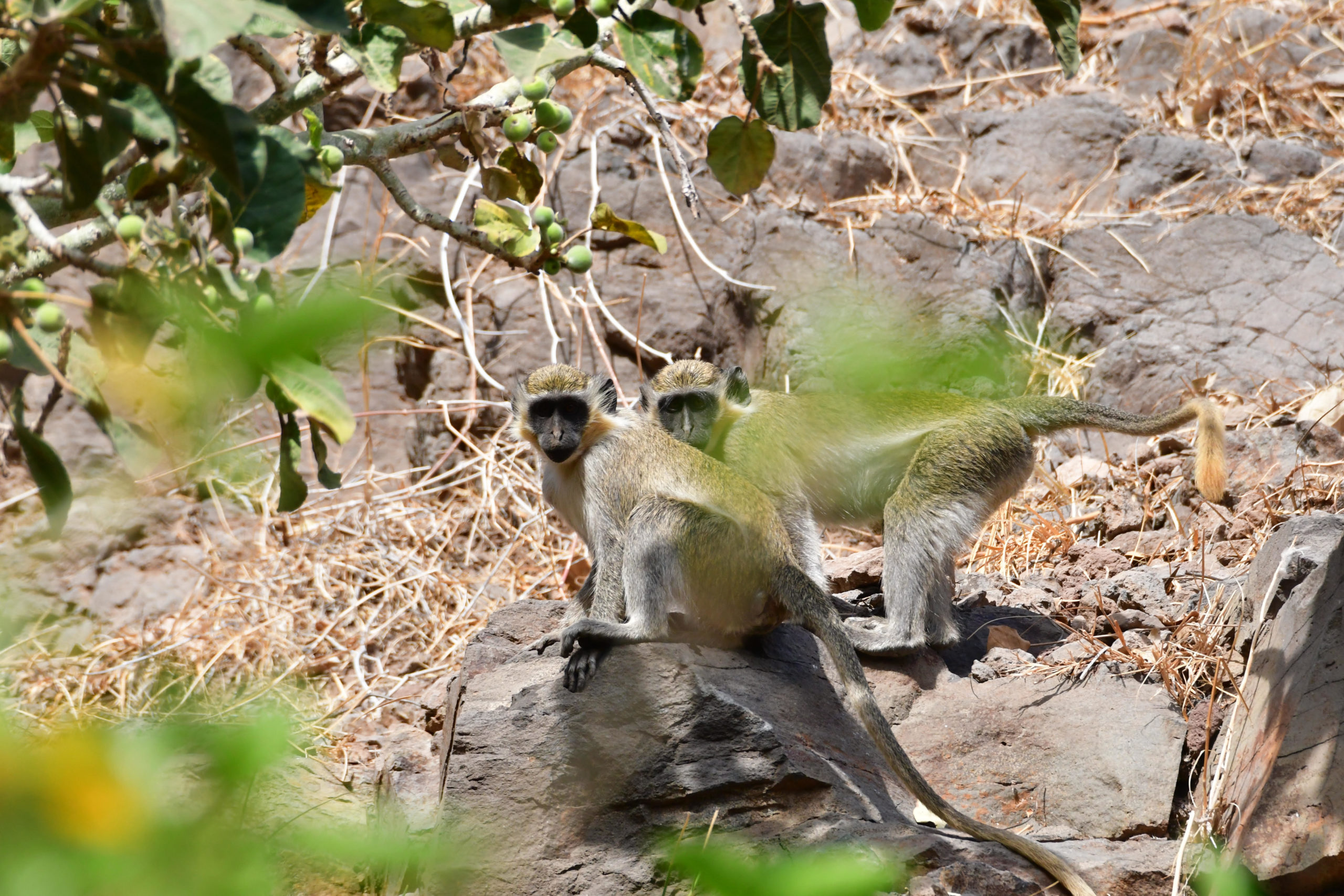WHY PROTECT THE CAPE VERDE GREEN MONKEY?
THE MONKEY POPULATION IS IN DECLINE
The Cape Verde monkey is a green cercopithecus (green monkey), scientific name "Chlorocebus sabaeus", of the Cercopithecidae family. Its presence on the islands of Santiago and Brava is attested by historical sources since the 16th century. Thus, for more than 500 years, monkeys have lived alongside the inhabitants of rural towns on the island of Santiago and Brava, the only two islands in Cape Verde where the green monkey is present. We can say that the monkey is part of the culture of the Cape Verdeans.
The green monkey has also been introduced to the islands of Barbados, and Saint Kitts and Nevis.

Without rapid action in favor of better management of the monkey population, it could disappear very quickly.
This is the observation made by the association on the basis of an empirical study carried out throughout this first year of activity.
Very little is mentioned in the various situation reports and strategic documents of national institutions related to the environment and biodiversity. The green monkey is not yet considered endangered on the African continent. The green monkey "Chlorocebus sabaeus" was in 2020 classified by the IUCN in the red list of species threatened with extinction as "Least concern". However, a downward trend in the population of monkeys has been observed in their natural geographical areas (Burkina Faso, Côte d'Ivoire, Gambia, Ghana, Guinea, Guinea-Bissau, Liberia; Mali; Mauritania, Senegal, Sierra Leone).
Regularly hunted or captured, the population of Cape Verde monkeys is estimated by the association to be in a situation of great vulnerability because the threats are numerous with a relatively high risk of extinction.
The pressure the monkey population is under is growing ; lack of data and protection actions, hunting, capture, agricultural and urban expansion, increasingly limited territory, deforestation, effects of climate change, etc... There are many threats that exert continuous pressure on reproduction of the species and therefore on its survival, because monkeys are massively captured to be sold, or killed when they cause damage in agricultural areas, or even killed for the meat trade.

The observations made on the island of Santiago by the association in the monkey habitat areas confirm that the groups of monkeys are more limited than before (between 10 and 15 individuals instead of 20-30 individuals) and these groups are increasingly isolated (fragmentation of the population).
In the absence of official data, on the basis of the first census observations carried out by the association in 6 habitat areas identified on the island of Santiago (area of 991 km²), it is estimated that the population of green monkeys should not exceed 3000 monkeys. By way of comparison, on the island of Barbados (area of 430 km2), half the size of the island of Santiago, where the green monkey was introduced at the same time, the population of green monkeys is estimated at 14,000 individuals and 60,000 in St Kits and Nevis, an island of 269 km2 with a population of 53,000 inhabitants!
One of the first scientific texts on Cape Verde green monkeys from 2011 (Introduced mammals of Cape Verde. Hazevoet & Masseti) already mentioned a decrease in the monkey population on Santiago; “Although there are no remotely accurate data on its past numbers, the scant information available suggests that green monkeys were more common in Santiago in the past than they are today.”
Monkeys are an essential component of biodiversity
They make an important contribution to forest regeneration, as well as to the health of ecosystems . Forests, oceans, agricultural soils, wetlands and other ecosystems play a crucial role in regulating the climate by absorbing a significant part of our CO2 emissions.

Protecting monkeys also means saving the forests in which these primates live, and thus saving all the biodiversity of these ecosystems.
It is recognized that the reduction of primates in any ecosystem has adverse ecological consequences. Monkeys are essential for forests and ecosystems. The green monkey is also called "the gardener monkey" because, by biting fruits and plants, it contributes to the maintenance and regeneration of forests by dispersing specific seeds (pollination). Without primates, many plant species could not reproduce and many forests would simply die.

Forests are at the heart of nature-based solutions and are seen as a means to combat both climate change and biodiversity loss.
Under the pressure of human activity, natural environments and the species that inhabit them are subject to an unprecedented decline .
Forests represent both the main terrestrial ecosystem reservoir of biological diversity and the one with the strongest carbon absorption capacity. Despite the recognition of the vital character of forests for the planet as for its population, deforestation and forests continue at an alarming rate.
Protecting ecosystems is one of the major actions to act against climate change.

Climate change, which is already affecting our planet, is certainly the greatest threat to humans and especially to young people today, but also to many animal species. Several scientific publications have assessed the vulnerability of species to climate change and indicate that time is running out for the survival of many species (WWF, IPBES, IPCC, UNEP, IUCN).
According to an international study published in 2018 in Sciences Advances, conducted by more than 30 international primatologists, nearly 60% of primate species are threatened with extinction within 25 to 50 years due to human activities and 75% of populations are already in decline . The habitats of primates are disappearing under the pressure of agriculture (which affects 76% of species), forestry (60%), livestock breeding (31%) and infrastructure. Hunting directly affects 60% of species. These phenomena are aggravated by other threats: pollution and climate change (Sciences Advances. Impending extinction crisis of the world's primates: Why primates matter).
MONKEYS ARE PROMOTERS OF NATURE TOURISM

Watching monkeys and other wildlife in natural parks or other areas can open up new job opportunities. They can stimulate the development of ecotourism and nature tourism in Cape Verde.
The Green monkey is very popular with tourists. He is a particularly intelligent monkey, who is not aggressive and knows humans very well. He is very popular with tourists who appreciate his company, although the green monkey is also called "the thief monkey". On the island of Barbados, once considered harmful and useless, the monkey is now seen as a factor in the development of tourism. The island of Barbados has made the green monkey a veritable national “mascot” which proves the economic value of protecting monkeys. Thanks to the Foundation's project, the image of the Green Monkey in Barbados has completely changed. Today the Vervet monkey is a real "star", and the monkey refuge is visited by more than 100,000 tourists each year.